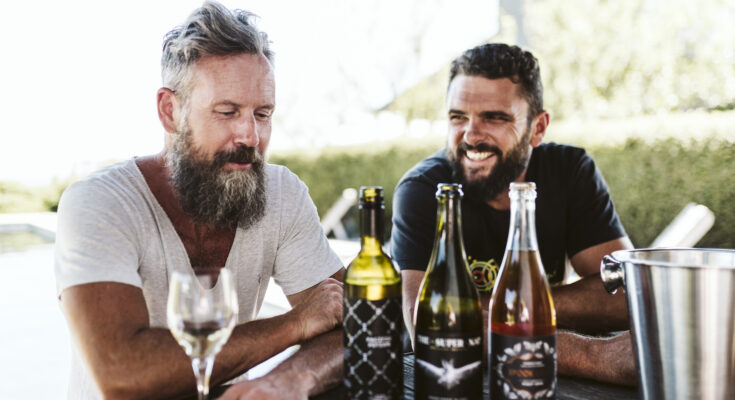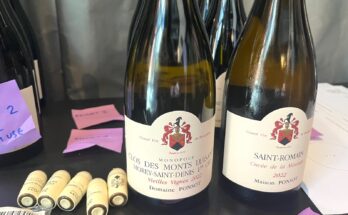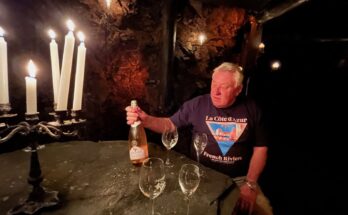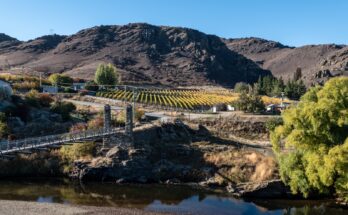On a recent trip to Hawke’s Bay, David stepped into another dimension. Over an interesting couple of hours, The Supernatural guru Gregory Collinge, talks through their wines, including the flagship, eponymous, Sauvignon Blanc. This chap can talk.
Gregory Collinge: The Supernatural is our main wine – we call it our flagship wine. We started making this in 2009, and we only made The Supernatural until 2013 when we started making our first two skin-fermented wines – Green Glow and Spook Light. But it’s still the wine that we make the most of, the wine that puts us on the map.
WineFolio: Is it the wine in Decanter magazine that says you’re the 9th best natural wine in the world?
GC: (laughs) well, no. That’s Green Glow.
And it’s 9th Best ‘Orange wine’ in the world, although the author Simon Woolf of The Morning Claret did specify that it wasn’t a ‘best of all time‘ list, but a list of his recent discoveries. Regardless, we’re pretty chuffed about that obviously because we are so young when it comes to making orange wines.
But the thing about The Supernatural is that we started making this wine because we knew we wanted to make a different style of New Zealand Sauvignon Blanc. And it’s worked really well for us because, as I’m sure you appreciate, it’s a very very different style.
WF: I’ve had a few since I’ve been here. Not just yours, but Rod McDonald makes one, and Tim Turvey at Clearview does too – both neighbours of yours? I’ve also been at Trinity Hill, so good company!
GC: Well, that’s the first thing – Hawke’s Bay Sauvignon Blanc is a different beast from Marlborough. There’s a lot of Sauvignon Blanc that’s grown in Hawke’s Bay that’s sent down to Marlborough for blending. But I think the style of it in Hawke’s Bay is definitely a warmer style, with warmer tropical fruits. Much less of that gooseberry and lawn clippings. So what we decided to do with the wine was to treat it quite differently. The Supernatural is made with extended lees contact. Depending on the vintage it has a malo, and it has wild yeast fermentation, 6 hours soaking on skins before pressing. Into stainless steel and 12 months on lees. And organically and biodynamically farmed. Quite different.
A lot of Marlborough Sauvignon Blanc is made to what I would describe as ‘a recipe’ – a very consistent taste every year. With The Supernatural we follow broadly the same winemaking technique every year, but we also want to express vintage variation.
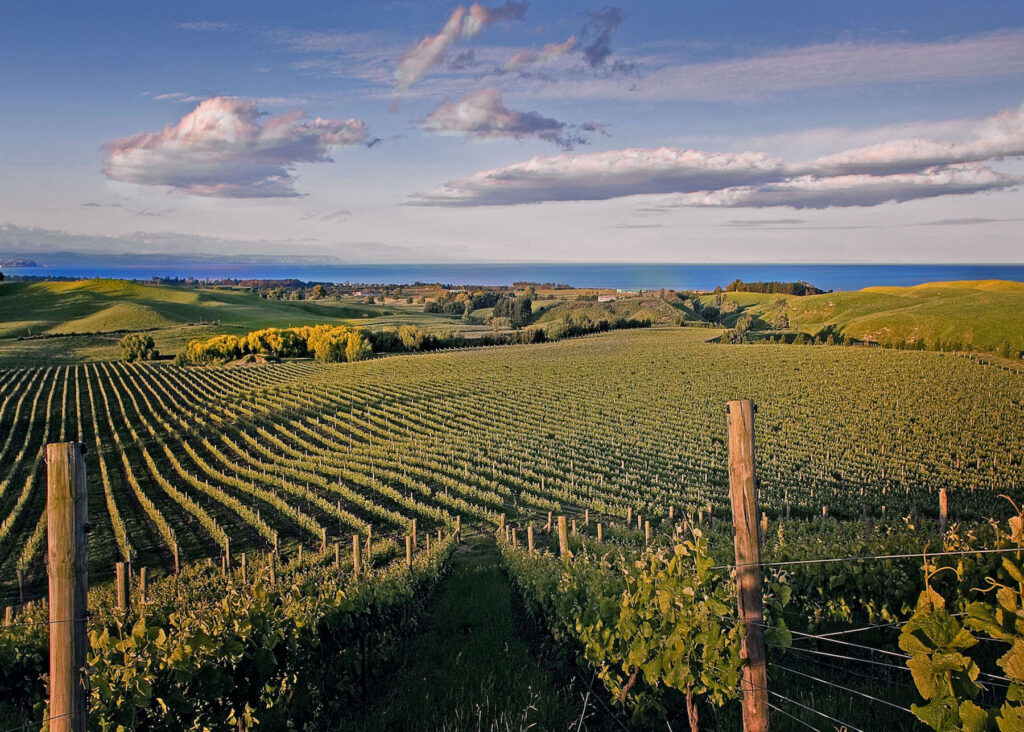
WF: And not just expressing it, but embracing that? So it’s an expression not just of its site, but of that moment.
GC: The thing about all our wines is that we’re trying to make ‘terroir’ wines. That’s a bit of a wanky word – whatever – but we are really trying to express site and each vintage. So we’ve got 2017 and 2108 in front of us and these two wines were both made in pretty much the same way. 2017 was probably one of the crappiest vintages Hawke’s Bay has ever had. For us, at harvest, we had 450mm of rain in two weeks. So we had to pick the 2017 really early – much lower brix than we would normally pick – something like 21 brix. 2018 was definitely better but there was also a lot of rain around that year. We didn’t get the ripeness or the absolute fruit quality that we wanted. And with The Supernatural we always look for and take the best grapes.
2019 a different beast again – we haven’t bottled that yet, but it was a lot better, and 2020 is going to be amazing. What that means is that, in 2017 it’s 11.5% alcohol – 2018 is up to 13.5% – much riper fruit. Both made in the same way, but each year we decide whether or not to let it go through malolactic fermentation. Both of 2017 and 2018 did go through malo.
WF: Warm and tropical on the nose, Ripe and floral. Generous and well balanced. Still got that passionfruit identifier but it’s not that whack in the face like you get with one from further south. Not astringent, sharp and tart – sweet and lovely. And I’m still getting that ripe pear flavour.
GC: That’s a style we’ve developed and one of the reasons we decide year by year whether we’ll let it go through malo or not. With malo you soften off that harsh acidity. The 2017 has been in bottle for a year and a half now, and because of the lees work, it benefits from time in bottle. The soaking on skins gives it a slight phenolic content.
WF: Can’t taste the spiders in it though.
GC: Might be a few fruit flies. It’s unfined and unfiltered. 2018 was still a challenging vintage. In 2017 we split the crop between the Supernatural for the best fruit, and Pacific potion, our second brand. 2018 we made all Supernatural but we definitely had to do a lot of sorting before we could press it. The ’18 is even warmer and smokey, spicy, even on the nose. . It’s getting back to where we started – that super warm, tropically, full-bodied style. It’s almost like an old vintage.
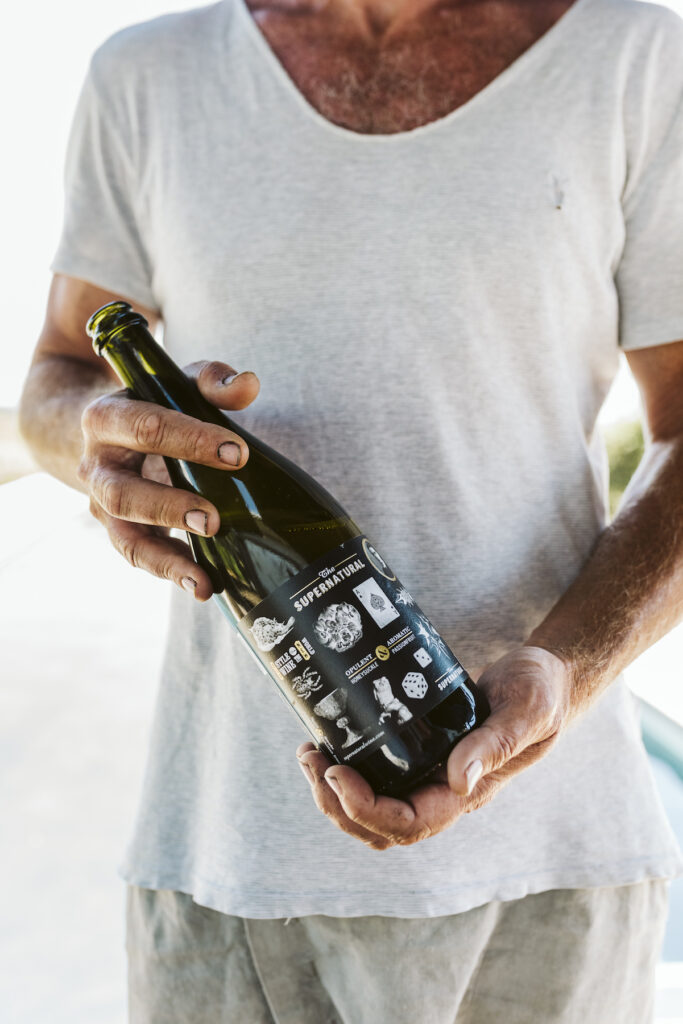
We’re a young wine company but I hope people will start buying this wine and treating it as a classic and put it away in a cellar and drink it over years. We think a minimum of 5 years aging potential, possibly longer. We haven’t been around long enough to prove that.
WF: I get hints of Vermouth or dry sherry, or even Muscat in the wine already – lots of reference points that aren’t your typical. Could you make a late harvest wine here?
GC: That’s a challenging question because the way the weather patterns are working at the moment. Last few years, up to 2020 we’ve been getting that rain at harvest, so if we left grapes on longer they would probably get blasted by the weather. I wonder if we might experiment with that at some point.
WF: I find the wines quite intriguing, but I do have to remember that this is Hawke’s Bay Sauvignon Blanc, grown on a very good site – your land is not your average site. It could prove itself to be a Grand Cru site, and over time people could point at that and say ‘look at the site – look at the wines’. I was talking to Tim Turvey about the handful of rows that he puts into his $175 Endeavour Chardonnay – and he’ll say ‘well, that’s my Grand Cru”. So I could see you doing that – charging a big premium for something that is a wine to put down – a complex, intriguing, serious wine?
GC: Interesting that you say that. Maybe that’s our next step. Our site, if you look at the Hawke’s Bay Winegrowers ‘appellations’ – we’re not in any of those! We’re a site of our own. Soil wise we are actually closest to Te Mata Estate which is as the crow flies about a couple of kilometres that way. But their site is much, much hotter. On almost identical soils, but they have the protection of Te Mata Peak and they’re a bit more inland. We’ve got elevation and sea breezes, so I think on average we’re 4 degrees cooler by day than inland, and 4 degrees warmer by night – so natural frost protection. Hard clay pan and we know that the pan varies from 2-3 metres in the North eastern corner, and ten metres in other parts.
We see the grapes that come off that north-eastern corner are much smaller and intense in flavour. These go into our Green Glow and Minus 220 skin-fermented Sauvignons. De-stemmed without crushing, and cool ferment. Anything from seven days to three weeks on skins depending on the phenolic taste followed by six months on lees in stainless steel, full malo and bottled unfined and unfiltered.
WF: I love this 2018 wine– it’s quite fun. It’s got a definite bready quality – a champagne-like nuance, with a bit of oat biscuit and brioche. The fruit’s quite lively though – still definitely Sauvignon Blanc but that riper end like pineapple and melon, not herbaceous. Lower acid but still crisp and with a slightly spicy finish.
GC: Also at the top of the vineyard is our Pinot Gris, and we make Spook Light from that. Again, small, intense, high-quality berries. De-stemmed and using a pied de cuvé ferment for up to three weeks.
WF: This is going lovely with the cheese, a real match. I bet it’s a great wine for a trendy wine bar and some tapas – we’re going out to one later aren’t we? Weird that it has almost lighter-red wine character to it- even the colour is kind of rosy – and the flavours are more cherry, pomengranate and lingonberries. Great concentration and length. Delicious!
GC: well if you like that, you’ll love this one. It’s a very small quantity, re-imagining of Green Glow, into a remix version called Minus 220. It has absolutely nothing in it but grape juice – no sulphur at all. We first made it for Budburst, a natural food and wine fair, in 2016 as our ‘gold standard’ natural wine and it developed a real following. It’s effectively hand-made – hand-picked, hand-stirred and bottled by hand – even the labelling, corking and wax seal was done by hand in the first year.
WF: Even the seal seems to smell of something – is that wine –flavoured?
GC: No, the seal is made from a local honey beeswax. We get some unparafinned beeswax from our local honey factory, Arataki, heat it up in a crock pot and hand dip every bottle. we’re up to 2,400 bottles annual production now with plans for more, so it’s pretty labour intensive.
WF: Ok, that’s seriously cool. And the wine’s amazing! Love the colour – really vibrant and so rich on the nose. A bit of nougat, pineapple – again, and that warm Mediterranean spice character – sumac and saffron. Sweet and sour flavours – like crystallised ginger and roasted, caramellised carrot. It’s quite decadent – I could see myself having this with a big seafood platter of crayfish and scallops.
GC: What do you think of the packaging and labels?
WF: Certainly different. I remember talking to Terra Sancta about their labels, which at the time seemed a really brave move, with the intricate die-cuts and ‘old master’ painting-like quality to them. But at least it’s not just another white square. Yours are very interesting. I like ‘interesting’.
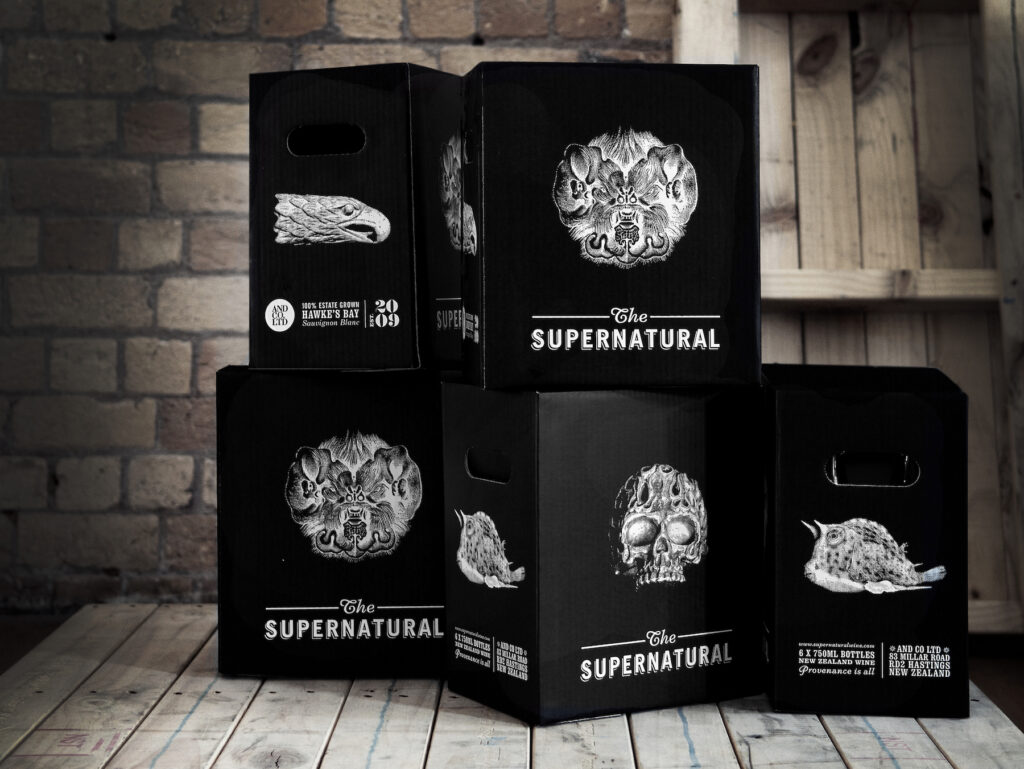
GC: We deliberately used things that reflect the wine inside. The crown seal is simple and natural – and different, for wine certainly. The skin-fermented wines are shown as developments from the Supernatural theme – deep sea creatures that glow green at the bottom of the ocean for Green Glow and , and bats and moths for SPook Light representing an unexplained orange light phenomenon in the Ozarks..
WF: No spiders?! Or Fruit flies? No, they’re cool, and like you say, they reflect the wine. Packaging that says what’s inside. I get it.

